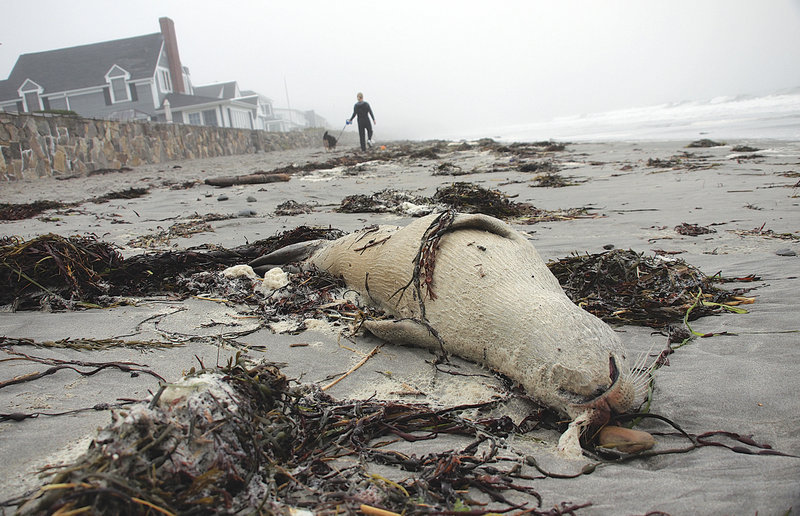A new strain of avian flu that jumped to the seal population caused the deaths of more than 100 harbor seals along the New England coast last fall, a study says.
So far, there’s no indication that humans can contract the virus strain, but scientists plan further study of the influenza strain’s implications.
“Any time we find a new virus, there’s a concern that it’s going to have a larger impact than on the population in which we originally find it,” said W. Ian Lipkin, one of the authors of the study and a professor of epidemiology at the Mailman School of Public Health at Columbia University.
All told, 162 dead seals were found from September to December from southern Maine to Massachusetts. The young seals — most of them 6 months old or younger — caught scientists’ attention when the first ones were found off New Hampshire because they were otherwise healthy.
The report, released this week, identifies the cause of the deaths as a new strain of the influenza A virus, called H3N8, that’s capable of jumping from birds to marine mammals.
Other strains of H3N8 have been found in dogs and horses, but this strain had many mutations that make it different, Lipkin said.
The report said further study is necessary and the emergence of the strain “must be considered a significant threat to both wildlife and public health.”
The flu strain is enough of a concern that scientists advised the public not to approach sick seals or other marine mammals.
Marine scientists in the field are now taking infectious-disease precautions including wearing gloves and masks, Lipkin said in a telephone interview.
“I don’t think people should approach sea life that appears to be ill, whether we’re talking about seals or whales or any other mammals. This is something that’s best left to professionals,” he said.
The report was compiled by scientists at the Center for Infection and Immunity at Columbia University’s Mailman School of Public Health; the National Oceanic and Atmospheric Administration; the New England Aquarium; the U.S. Geological Survey’s National Wildlife Health Center; SeaWorld; and the EcoHealth Alliance.
The report notes that other influenza strains have killed seals over the years.
Scientists are now looking into seal deaths last year off the coast of Alaska, but those weren’t caused by bird flu, said Fionna Matheson, a NOAA spokeswoman in Silver Spring, Md.
Send questions/comments to the editors.



Success. Please wait for the page to reload. If the page does not reload within 5 seconds, please refresh the page.
Enter your email and password to access comments.
Hi, to comment on stories you must . This profile is in addition to your subscription and website login.
Already have a commenting profile? .
Invalid username/password.
Please check your email to confirm and complete your registration.
Only subscribers are eligible to post comments. Please subscribe or login first for digital access. Here’s why.
Use the form below to reset your password. When you've submitted your account email, we will send an email with a reset code.